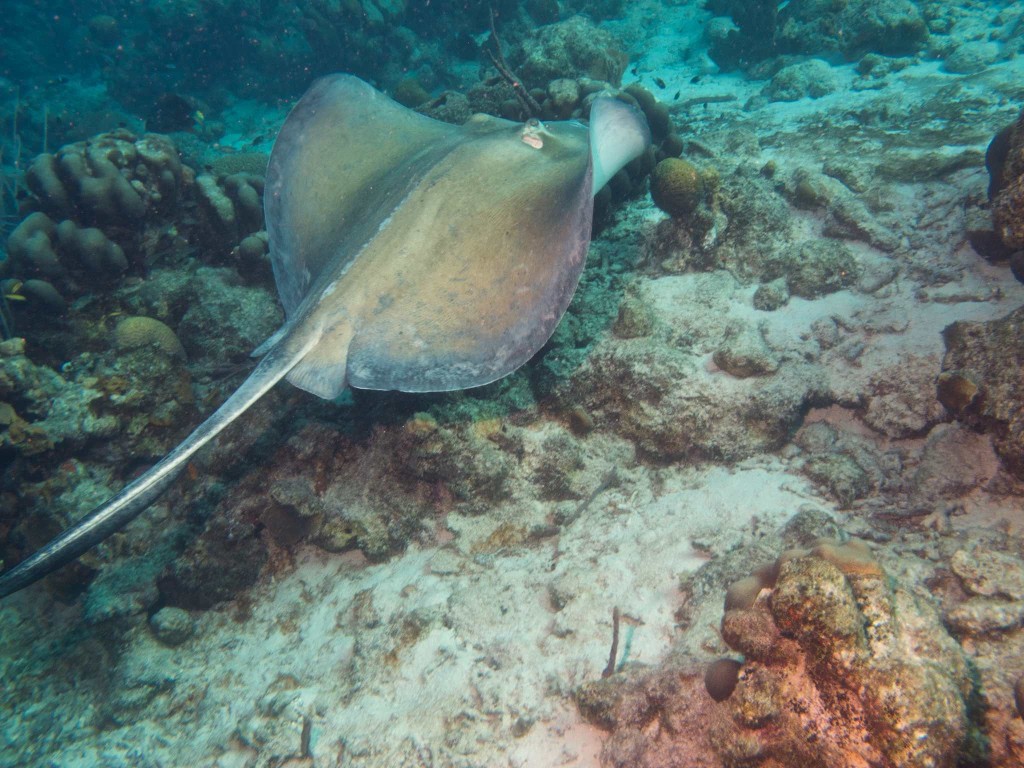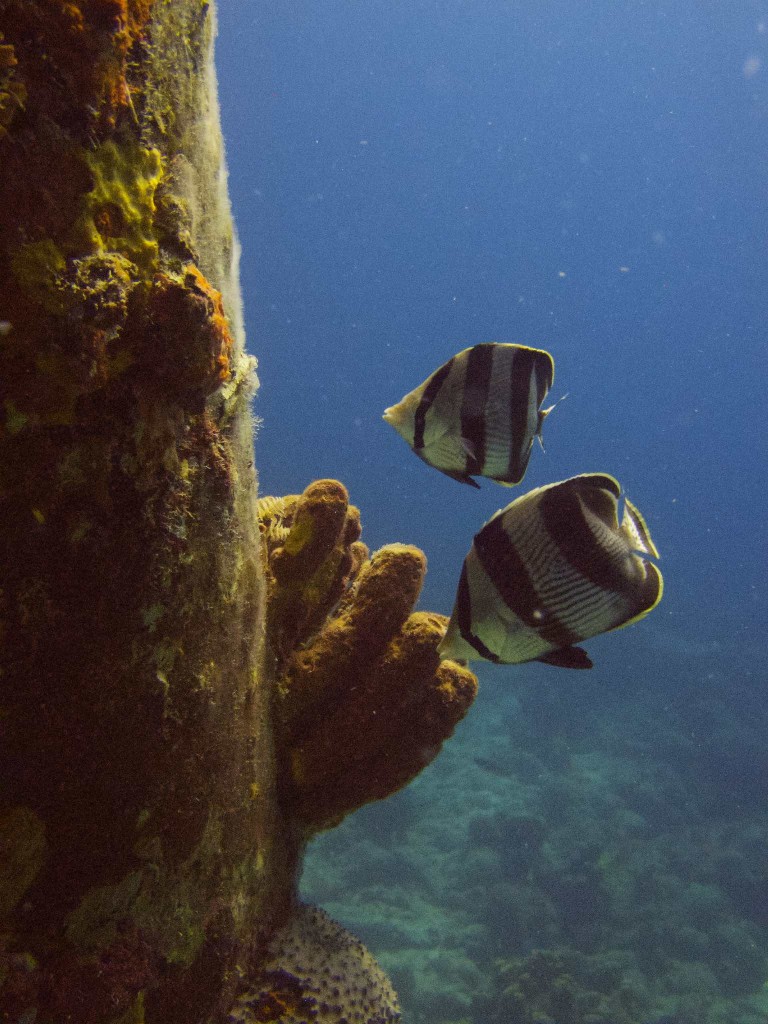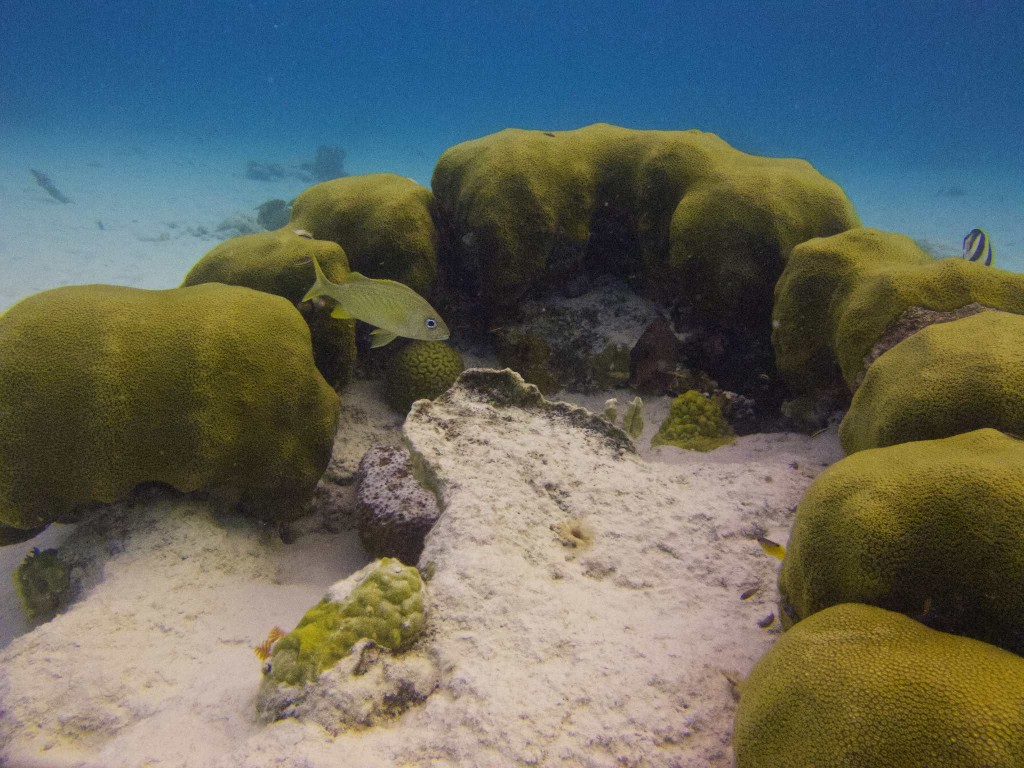Today was our first actual day of diving. After breakfast, we headed down to the dive shop to pick up our weights, and get in the water. The resort requires guests to do their first dive on the house reef, in order to allow people a chance to get their weighting (and hence their buoyancy) correct before heading out other dive sites.
We’d seen a bait ball from the surface to the south, so we headed down that way. We didn’t see the bait ball, but there was still a lot to see – lots of black barred soldierfish, grunts, and lots and lots of little fish and interesting coral formations. On the way back, a sting ray glided past us.
After the first dive, we took care of the shopping, then headed out for the afternoon’s dives. The first dive was at Salt Pier. Cargill has a large salt operation here; they evaporate it in salt pans, then there’s a big long conveyor belt that carries the salt out to ships. The pier has a bunch of pilings underwater that gather tons of sea life.
For the afternoon dives, I was trying something new. The big problem with underwater photography is that the light is deficient in red; everything looks blueish. The usual way of dealing with this is to use a strobe; the strobe provides balanced white light. The downside of the strobe is that it gives a very unnatural look; the light only carries a few feet, and then peters out, leaving a dark background.
Today, I tried out a red filter. It works by filtering out the extra green and blue light from the ambient light. It’s not a panacea – I found that sometimes it over corrects, sometimes it under corrects. But it does allow you to shoot by ambient light, and digital cameras are sensitive enough to deal with the lower light levels. It allows you to get a very natural feel to the pictures.
After Salt Pier, Ralph, the Waskos and I did a dive at a site called Aquarius. It has a very easy sandy entry, and then you traverse a longish patch of sand dotted with coral heads, and then you reach the reef.
Update: More pictures here.



